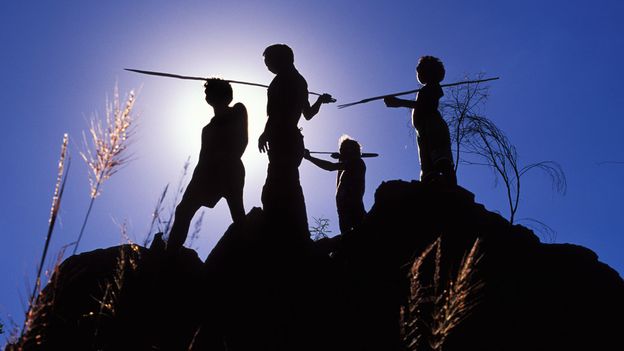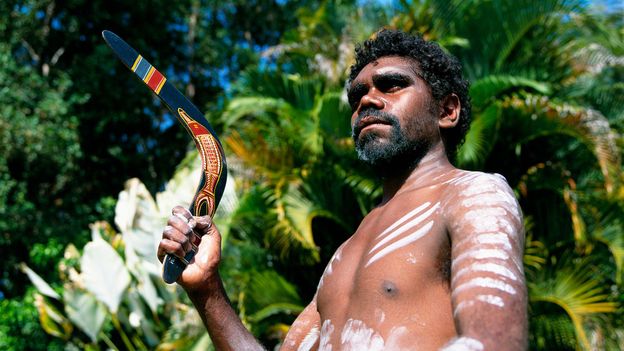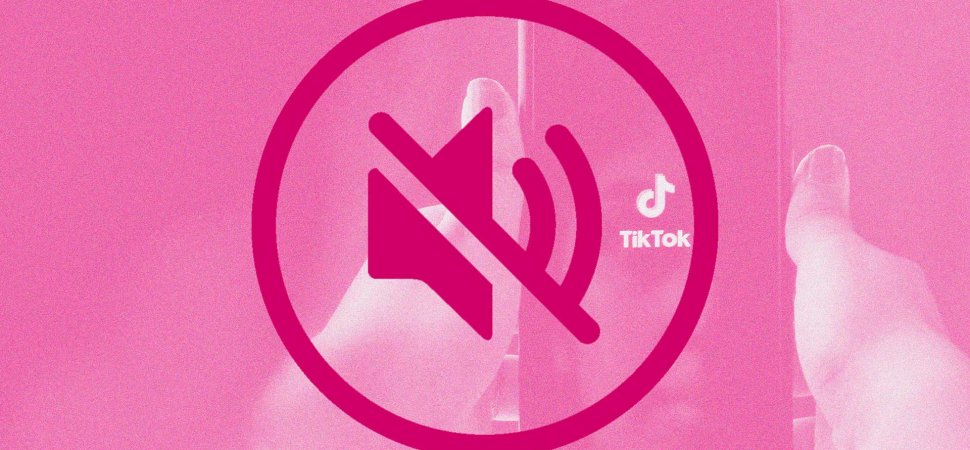| ? |
 |
|
Don't like ads? Go ad-free with TradeBriefs Premium    
CEO Picks - The best that international journalism has to offer!  S30 S30Microsleeps: The naps that may only last seconds   We're not talking about a five-minute doze on the sofa while you're bingeing on a box set. That counts as a long time in the world of microsleeping. Here, naps are measured in seconds.While there's no single definition scientists use, many studies focus on shuteye that lasts from one to 15 seconds at a time. And there is a growing understanding of how microsleeps affect our daily lives, from intruding into mundane everyday tasks to putting lives at risk in certain situations, such as driving a car. But we are also getting closer to knowing why they might happen in the first place.
Continued here
|
| ? |
 |
 S1 S1Research: VCs Reward Self-Presentation Over Qualifications   One need only look to widely publicized cases such as Theranos and WeWork to see that the most charismatic, convincing founders do not always make the best investments. What can VCs do to ensure that they invest in startup founders for the right reasons? The authors used LinkedIn data from the founders of more than 4,000 U.S. companies to explore the connection between self-presentation, actual expertise, and companies’ short- and long-term success. Based on this analysis, they found that founders’ expertise was the strongest predictor of a successful exit — but when it came to funding, expertise signaling made much more of a difference than actual experience. In other words, while longer-term outcomes depend more on actual expertise, shorter-term fundraising success may depend more on effective self-presentation. In light of these findings, the authors recommend that founders not overlook the importance of effectively signaling their strengths, while investors should be sure to check their assumptions and avoid making financial decisions based on founders’ self-reported signals alone.
Continued here
|
| ? |
 |
 S2 S2What's So Special About Founders?   Americans have an obsession with business founders and what sets them apart. Is it vision, drive, or insight that helps them turn industries upside down and conjure billions of dollars? Is it how they run meetings or make decisions? Is it because they eat vegan, take cold showers, and meditate? Founders occupy a cultural space that combines celebrity, guru, futurist eccentric, and occasionally comic book villain.
Continued here
|
| ? |
 |
|
| ? |
 |
|
|
 S3 S3The Best Path to Success is Your Own   If you’re wondering what to do next in your career, you’re hardly alone. The debate about where and how we may best feed our hunger for mastery, service, prestige, approval, safety, achievement — whatever we’re after — is fiercer than ever. Do you go after, or hold on to, a corporate job or strike out […]
Continued here
|
 S4 S4Small Company Finance: What the Books Don't Say   Owners of small private corporations have great financial freedom. They can lease assets to the business, put family members on the payroll, and award themselves lavish perks. And they don’t have to maximize the market value of their stock. They can put the long-term health of the business ahead of short-term earnings growth, and they can be as conservative or as daring about borrowing as they wish.
Continued here
|
 S5 S5Why the Lean Start-Up Changes Everything   In the past few years, a new methodology for launching companies, called “the lean start-up,” has begun to replace the old regimen. Traditionally, a venture’s founders would write a business plan, complete with a five-year forecast, use it to raise money, and then go into “stealth mode” to develop their offerings, all without getting much feedback from the people they intended to sell to. Lean start-ups, in contrast, begin by searching for a business model. They test, revise, and discard hypotheses, continually gathering customer feedback and rapidly iterating on and reengineering their products. This strategy greatly reduces the chances that start-ups will spend a lot of time and money launching products that no one actually will pay for.
Continued here
|
 S6 S6Project Managers Should Think Like Startup Founders   Most project managers focus on planning and execution. But large projects rarely go in a straight line, and often that planning doesn’t take into account key assumptions, and the execution goes far in the wrong direction before the need for changes are recognized. Agile approaches don’t go far enough in solving this problem because they focus on pivoting quickly — being reactive — rather than avoiding the problems to begin with. The author, a strategic advisor to large firms, suggests that project leaders should think like startup founders instead, using the tools that have become common in that sector: a project canvas, customer development, and so forth. In doing so, project leaders can uncover and solve for some of the project’s biggest questions and risks first, before scaling to full execution.
Continued here
|
 S7 S7How Better Marketing Elected Barack Obama   When the book is written on this election, it should not be titled “The Making of a President,” but “The Marketing of a President.” Barack Obama’s campaign is a case study in marketing excellence. True, it was always going to be a Democratic year. An unpopular war, an incumbent Republican president with rock bottom approval […]
Continued here
|
 S8 S8How Marketing The American Dream Caused Our Economic Crisis   The current economic crisis has been blamed on the greed of Wall Street, on bankers’ excessive leveraging of assets, on irresponsible banks and mortgage brokers who fabricated applications for no downpayment home loans knowing that the risks could be readily laid off on unsuspecting third parties.
Continued here
|
 S9 S94 Ways Silicon Valley Changed How Companies Are Run   Silicon Valley firms don’t just create technology. Over the past 30 years they’ve invented a new way of running companies, what author Andrew McAfee calls the “Geek Way.” It’s comprised of four norms that increasingly define successful businesses: Speed, ownership, science, and openness. Companies that resist this recipe risk being left behind.
Continued here
|
 S10 S10 S11 S11The Human Element in Digital Prototyping   Given that few products and services these days exist without a digital component of some sort, companies are increasingly being required to do live prototyping of a digital solution. There’s a common perception that product development for digital solutions is easier than it is for physical ones. While this can be true, we’ve seen many digital solutions fail because the product development process is too far removed from the user and lacks a human touch.
Continued here
|
 S12 S12Take a Step Back to Propel Your Career Forward   For my first real job after graduate school, I earned $26,000 a year as a full-time reporter. It wasn’t a handsome salary — in fact, I could barely live on it — but I was getting paid to write. That’s more than I can say about how I spend much of my time these days. For the launch of my first book, Reinventing You, I spent six months writing scores of articles and blog posts for various outlets, and giving talks at universities, bookstores, and businesses — a great deal of it for free.
Continued here
|
 S13 S13How to Talk to Your Kids About Layoffs   Layoffs, we must remember, are a family affair. And facing the painful reality of job loss as a family is necessary. This doesn’t mean your four-year-old needs to know the details of your household budget, or that your pre-teen needs to worry about transferring to a new (unknown) school. But it does mean approaching conversations, and any problems you have, in a clear and age-appropriate manner. In this piece, the author offers advice on what to say (and not to say) when you break the news to your children as well as practical strategies to help your family weather the job loss together.
Continued here
|
 S14 S14Starting a New Job as a Mid-Career Professional   If it’s been a while since you started a new job, you might experience a range of emotions once you start your new position. But those first weeks in a new job are when you make your first impression, and it’s hard to change people’s perceptions once they’re developed. The author presents five tips on how to transition into a new job, especially if it’s been a long time since you’ve made a move. First, focus on relationship-building. Second, do your research on the company and its culture. Third, get a sense of how other people at the company view your role. Fourth, understand dependencies and cross-functional workflows to determine who needs something from you and what you depend on to be able to provide it. Finally, give yourself time to adjust to the new role.
Continued here
|
 S15 S1510   These established companies are boosting newcomers with resources, mentorship, and more. Here's a list of just some of the available programs.
Continued here
|
 S16 S16 S17 S17 S18 S18 S19 S19 S20 S20 S21 S21 S22 S22 S23 S23 S24 S24 S25 S25Why Calling Your Workers Heroes Can Backfire   At the height of pandemic-era lockdowns, the term “hero” was used to describe full-time workers including frontline health workers, bus drivers, supermarket cashiers, and other workers who had to appear at work in-person. In 2020, Instacart launched a “Household Heroes” campaign to recruit 300,000 workers to the platform. While moralizing work like this might seem to have benefits for workers and the company, interviews with Instacart workers shed light on the mixed feelings many workers held about the label. The authors share these findings on how the label might backfire and identify three groups from the interviews: Skippers, Stallers, and Strugglers.
Continued here
|
 S26 S26GenAI Can Help Small Companies Level the Playing Field   Generative AI has the potential to close content, insight, and technology gaps that large corporations typically have over their smaller counterparts. This shift presents a unique opportunity for SMEs, whose inherent agility gives them an edge in adopting and innovating with AI. This article shares some early examples of how new approaches to text and image generation, AI-generated video, customer insights, and more can help boost the competitiveness of SMEs willing to invest in generative AI tools. It’s not far-fetched to foresee a future marketplace where the depth of corporate resources is not the unequivocal determinant of success.
Continued here
|
 S27 S27Taupo: The super volcano under New Zealand's largest lake   Located in the centre of New Zealand's North Island, the town of Taupo sits sublimely in the shadow of the snow-capped peaks of Tongariro National Park. Fittingly, this 40,000-person lakeside town has recently become one of New Zealand's most popular tourist destinations, as hikers, trout fishers, water sports enthusiasts and adrenaline junkies have started descending upon it.The namesake of this tidy town is the Singapore-sized lake that kisses its western border. Stretching 623sq km wide and 160m deep with several magma chambers submerged at its base, Lake Taupo isn't only New Zealand's largest lake; it's also an incredibly active geothermal hotspot. Every summer, tourists flock to bathe in its bubbling hot springs and sail through its emerald-green waters. Yet, the lake is the crater of a giant super volcano, and within its depths lies the unsettling history of this picturesque marvel.
Continued here
|
 S28 S28Message sticks: Australia's ancient unwritten language   The continent of Australia is home to more than 250 spoken Indigenous languages and 800 dialects. Yet, one of its linguistic cornerstones wasn't spoken, but carved.Known as message sticks, these flat, rounded and oblong pieces of wood were etched with ornate images on both sides that conveyed important messages and held the stories of the continent's Aboriginal people – considered the world's oldest continuous living culture. Message sticks are believed to be thousands of years old and were typically carried by messengers over long distances to reinforce oral histories or deliver news between Aboriginal nations or language groups.
Continued here
|
 S29 S29Did Australia's boomerangs pave the way for flight?   The aircraft is one of the most significant developments of modern society, enabling people, goods and ideas to fly around the world far more efficiently than ever before. The first successful piloted flight took off in 1903 in North Carolina, but a 10,000-year-old hunting tool likely developed by Aboriginal Australians may have held the key to its lift-off. As early aviators discovered, the secret to flight is balancing the flow of air. Therefore, an aircraft's wings, tail or propeller blades are often shaped in a specially designed, curved manner called an aerofoil that lifts the plane up and allows it to drag or turn to the side as it moves through the air.
Continued here
|
 S31 S31How planting trees is bringing clean water to a tropical nation   Dominga Reynoso turned her rusted, squeaky tap above the kitchen sink. Nothing, not even a drop, came out. Even the pipes, which usually gurgled in anticipation, stayed silent. Reynoso and her neighbours, who live in Santo Domingo, the capital of the Dominican Republic, would go without running water for 22 days – an increasingly common occurrence across the mountainous Caribbean island of Hispaniola, which the country shares with Haiti.Historically, the country has relied on bountiful natural supplies of water, which are freely accessible to both public and private entities. Over the past century, however, that supply has been under threat. Increased demands from the tourist, mining, and agricultural industries have meant less is left for local people.
Continued here
|
 S32 S32Google cuts off an $83 million ghost labor contract   It’s been a season of tech layoffs, and the collapse in digital ad rates has hit Google particularly hard. Last January saw 12,000 jobs cut, and already this year there have been more painful cuts and restructuring — although the total number of layoffs is still unclear. But one cut stood out in particular, ending the company’s $82.8 million contract with the outsourcing firm Appen, which provided search raters to test the quality of Google Search.Appen isn’t a household name, but the company’s global reach and flexibility have made it a prominent source for AI training data. Annotating data for a large language model is similar work to rating the outputs of Google Search, serving as the human in the loop of a mostly automated process — so it makes sense that the same workers often serve both purposes. In both cases, it tends to be badly paid and precarious work.
Continued here
|
 S33 S33Why Does the Same Temperature Feel Hotter or Colder in Different Places?   The answer isn’t just about temperature. Our physiology, psychology and clothing choices also factor inA cold snap recently gripped the U.S., plunging many states into temperatures far below what is typical for an average winter. In Nashville, Tenn., readings plummeted to minus one degree Fahrenheit (–18 degrees Celsius), while Oregon declared a state of emergency as a severe ice storm caused lows in the teens and an uptick in weather-related deaths. In famously balmy Florida, thermometers dipped as low as 20 degrees F (–6.7 degrees C)—chilly enough to see cold-stunned iguanas falling from the trees and residents complaining on social media about the deep freeze. But rather than finding sympathy, people in the Sunshine State faced a barrage of jokes from across the Internet; what feels unbearably cold to Floridians may be nothing to, say, people from Minnesota.
Continued here
|
 S34 S34Stopping the Latest Outbreak Threat: Chronic Wasting Disease   A spillover of the neurological disease to humans from deer, elk, and other animals could be devastatingEach fall, millions of hunters across North America make their way into forests and grasslands to kill deer. Over the winter, people chow down on the venison steaks, sausage, and burgers made from the animals.
Continued here
|
 S35 S35An Alliance Calling For More Open AI Should Heed Their Own Call   The word “open” is often thrown around in describing AI transparency, but the companies and groups calling for it must themselves be open about their practicesRecently, Facebook’s parent company, Meta, along with IBM and over 50 other founding members, announced an AI Alliance to “advance open, safe, responsible AI.” The group would be committed to “open science and open technologies,” promoting standards and benchmarks to reduce the risk of harm that advanced models might cause.
Continued here
|
 S36 S36February 2024: Science History from 50, 100 and 150 Years Ago   1974, Comet Explained: “Ion and dust tails are created by two processes. First, high-energy electrons in the solar wind ionize the molecules in the coma of the comet, stripping them of electrons and leaving them positively charged. Second, the solar wind gives rise to a bow wave around the coma; chaotic magnetic fields within the solar wind selectively carry the ionized molecules away from the coma at high speeds.”“NASA is planning a 120-inch reflecting telescope to be launched in the early 1980s. The Large Space Telescope will probably be the first large payload put into orbit by the 'space shuttle.' Astronomers will be able to map the recessional velocities of galaxies to see if there are any irregularities in the Hubble expansion of the universe that could be evidence for a deceleration of expansion. Moreover, because of its ability to probe the universe to magnitudes 100 times fainter than can be reached from the ground, the telescope should reveal many new objects in other galaxies.”
Continued here
|
 S37 S37 S38 S38 S39 S39Forgotten Electrical Engineer's Work Paved the Way for Radar Technology   Sallie Pero Mead made major discoveries about how electromagnetic waves propagate that allowed objects to be detected at a distanceSallie Pero Mead was first hired at AT&T in 1915 as a “computer”—a human calculator—shortly after completing her master’s degree in mathematics at Columbia University. Before long she started working on the company’s transmission engineering team as both a mathematician and an electrical engineer. She and her team developed and tested hollow metal tubes used as waveguides: structures that confine and direct electromagnetic waves. In 1933 they discovered a new way that hyperfrequency waves could propagate down these tubes, and this made radar technology possible—just in time for use in World War II.
Continued here
|
 S40 S40Wetlands Made Salty by Rising Seas Produce More Heat-Trapping Methane   Wetlands with a small amount of salinity can produce more methane gas than those filled with freshwater or lots of seawater, new research suggestsCLIMATEWIRE | Sea-level rise could cause some coastal wetlands to release huge quantities of methane gas, according to a new study that challenges how scientists view the relationship between salinity levels and climate-warming emissions.
Continued here
|
 S41 S41A Camera-Wearing Baby Taught an AI to Learn Words   Most machine-learning models rely on mountains of data to replicate human text, but new research suggests the recipe for learning language might be simplerBy the time most children are two years old, they can understand about 300 words. By the age of four, the average vocabulary has ballooned to more than 1,000 words. Our species’ incredible capacity to quickly acquire words isn’t fully understood. Some cognitive scientists and linguists have theorized that people are born with built-in expectations and logical constraints that make this possible. Now, however, machine-learning research is showing that preprogrammed assumptions aren’t necessary to swiftly pick up word meanings from minimal data.
Continued here
|
 S42 S42 S43 S43 S44 S44NFL Championship Weekend Recap   Wharton’s Cade Massey, Eric Bradlow, Adi Wyner, and Shane Jensen speak with football analyst Ben Baldwin about the NFL Conference Championship games and what to expect from the 49ers and the Chiefs.©2024 Knowledge at Wharton. All rights reserved. Knowledge at Wharton is an affiliate of the Wharton School of the University of Pennsylvania.
Continued here
|
 S45 S45Lessons from the past on adapting to climate change   Laprisha Berry Daniels' grandparents left the Southern United States and migrated north to Detroit in the 1950s — a move that could be considered a big "climate change." Now, as a public health social worker, Berry Daniels mines the survival strategies of her grandparents to think about how we can all learn from the past to better prepare for current and future environmental climate change.
Continued here
|
 S46 S46 S47 S47 S48 S48 S49 S49 S50 S50 S51 S51 S52 S52 S53 S53 S54 S54 S55 S55 S56 S56What was it like when the Sun was born?   Although the Universe was only two-thirds of its present age back when the Sun was first forming, things back then were already very similar to how they are today. The Milky Way appeared relatively isolated: the second-largest member of a relatively modest group of galaxies. Low-mass dwarf galaxies would be seen slowly merging and being gobbled up by larger ones, just like they do all over the Universe. And throughout the Milky Way, hundreds of billions of stars are already shining, with gas clumps occasionally contracting along its spiral arms to trigger new waves of star-formation. There are anywhere from tens to hundreds of these regions active in our galaxy at any time.This process goes on in all gas-rich quiescent galaxies across the Universe, including run-of-the-mill spiral galaxies like our own: stars form slowly, in little bursts, while gas gets drawn into the spiral arms and star-formation propagates outward from the center in these objects. In one of those regions within the Milky Way, 9.2 billion years after the Big Bang, a cloud of gas collapsed, giving rise to many new stars and likely a star cluster. It was from one of those clumps, that a particular star — our Sun — as well as the planets and the remainder of our Solar System, formed. Here’s what it was like when the Universe made what would eventually become our cosmic home.
Continued here
|
 S57 S57The hidden ways sleep deprivation warps your reality   There comes a time when a person is sure they are drunk. They might try to say something authoritative and instead mew some incoherent babble. They might try to cook a late-night snack and end up pouring an entire cellar of salt into the pan. At these times, a voice deep inside their mind might say, “You’re drunk.” So, too, with hallucinogenic trips: As magical colors swirl in their visual field and the walls of the room seem to breathe in and out, the tripper will know something is abnormal.Intoxicants warp reality. People know this before they take the intoxicant, and so they expect reality to warp. But what happens when you don’t know you’re intoxicated? In those instances, people often mistake the warped reality they see for actual reality. They feel no reason to correct their senses. According to some research, one in three people reading this is intoxicated right now, but they might not know it. They are sleep-deprived.
Continued here
|
 S58 S58Can AI write authentic poetry?   “Time — a few centuries here or there — means very little in the world of poems.” There is something reassuring about Mary Oliver’s words. Especially in an era of rapid change, there is comfort to be had in those things that move slowly. But oceans rise and mountains fall; nothing stays the same. Not even the way poetry is made.The disappearance of the author in 20th-century literary criticism can perhaps be traced back to the surrealist movement and its game of “exquisite corpse.” The surrealists believed that a poem can emerge not only from the unconscious mind of an individual, but from the collective mind of many individuals working in consort — even, or perhaps especially, if each individual has minimal knowledge of what the others are doing. Soon the idea of making art from recycled objects emerged. In the realm of literature, this approach took the form of found poetry.
Continued here
|
 S59 S59 S60 S60Clownfish "count" white stripes to determine if an invader is friend or foe   Many people tend to think of clownfish, with their distinctive white bars against an orange, red, or black background, as a friendly sort of fish, perhaps influenced to some extent by the popular Pixar film Finding Nemo. But clownfish can be quite territorial when it comes to defending their host anemone from intrusion by others, particularly those from their own species. A new paper published in the Journal of Experimental Biology describes how clownfish determine if a fish approaching their home is friend or foe by "counting" the number of white bars or stripes on their bodies.
Continued here
|
 S61 S61 S62 S62 S63 S63Google's Pixel storage issue fix requires developer tools and a terminal   Google has another fix for the second major storage bug Pixel phones have seen in the last four months. Last week, reports surfaced that some Pixel owners were being locked out of their phone's local storage, creating a nearly useless phone with all sorts of issues. Many blamed the January 2024 Google Play system update for the issue, and yesterday, Google confirmed that hypothesis. Google posted an official solution to the issue on the Pixel Community Forums, but there's no user-friendly solution here. Google's automatic update system broke people's devices, but the fix is completely manual, requiring users to download the developer tools, install drivers, change settings, plug in their phones, and delete certain files via a command-line interface.
Continued here
|
 S64 S64FCC to declare AI-generated voices in robocalls illegal under existing law   The Federal Communications Commission plans to vote on making the use of AI-generated voices in robocalls illegal. The FCC said that AI-generated voices in robocalls have "escalated during the last few years" and have "the potential to confuse consumers with misinformation by imitating the voices of celebrities, political candidates, and close family members."
Continued here
|
 S65 S65 S66 S66 S67 S67Convicted console hacker says he paid Nintendo $25 a month from prison   When 54-year-old Gary Bowser pleaded guilty to his role in helping Team Xecuter with their piracy-enabling line of console accessories, he realized he would likely never pay back the $14.5 million he owed Nintendo in civil and criminal penalties. In a new interview with The Guardian, though, Bowser says he began making $25 monthly payments toward those massive fines even while serving a related prison sentence.
Continued here
|
 S68 S68Lost Photographs of Black America   A trove of images from the 1960s and ’70s, discovered in a Swedish bank vault, offers new perspectives on the past—and the present.Ernest Cole was born in 1940 to a Black family in the Eersterust township, near Pretoria, South Africa. As a child, he witnessed the formalization of the apartheid regime. When he was a teenager, he began working for Drum, a South African magazine geared toward Black readers. He later changed the spelling of his surname from Kole to Cole, which—along with straightening his hair—helped reclassify him as “Coloured,” a formal designation that gave him more freedom of movement in the country’s calcifying racial hierarchy. He became one of South Africa’s first Black freelance photographers, earning the ire of apartheid enforcers by capturing the human costs of the regime.
Continued here
|
 S69 S69The Disorienting Beauty of 'Africa & Byzantium'   Viewed benignly, the encyclopedic art museum is a great public library of things, illuminating the brilliant variety and shared impulses of our species, and promoting intercultural understanding and admiration. Viewed less benignly, it has been cast as the well-spoken child of imperialist shopaholics and kleptomaniacs who appropriated the art of other people to tell flattering tales about themselves.Museums have long contested this characterization on grounds both pragmatic (their ability to protect and care for the world’s treasures) and high-minded—the belief that convening things from everywhere enables them to tell a sweeping, global story about what it is to be human. The 2002 “Declaration on the Importance and Value of Universal Museums,” signed by the directors of 18 world-famous institutions, put the claim succinctly: “Museums serve not just the citizens of one nation but the people of every nation.” It’s a fine sentiment, but the fact that every one of those 18 museums is in Europe or North America raises obvious questions about just how those peoples of other nations are being served. This geographic lopsidedness has led critics to challenge not only the museums’ rights to the objects in their care, but also the histories those objects have been arranged to illustrate.
Continued here
|
 S70 S70Why You're Better Off Not Borrowing   Want to stay current with Arthur’s writing? Sign up to get an email every time a new column comes out.Does having more money make you happier? Most Americans think so, yet economists continue to debate the question. A 2010 paper by two Nobel laureates concluded yes—but only for those earning up to about $75,000 a year. In 2021, an economist revisited the issue and found that well-being may go on increasing for much higher income levels as well.
Continued here
|
 |
TradeBriefs Publications are read by over 10,00,000 Industry Executives About Us | Advertise Privacy Policy Unsubscribe (one-click) You are receiving this mail because of your subscription with TradeBriefs.
Our mailing address is GF 25/39, West Patel Nagar, New Delhi 110008, India |




































































































































































































